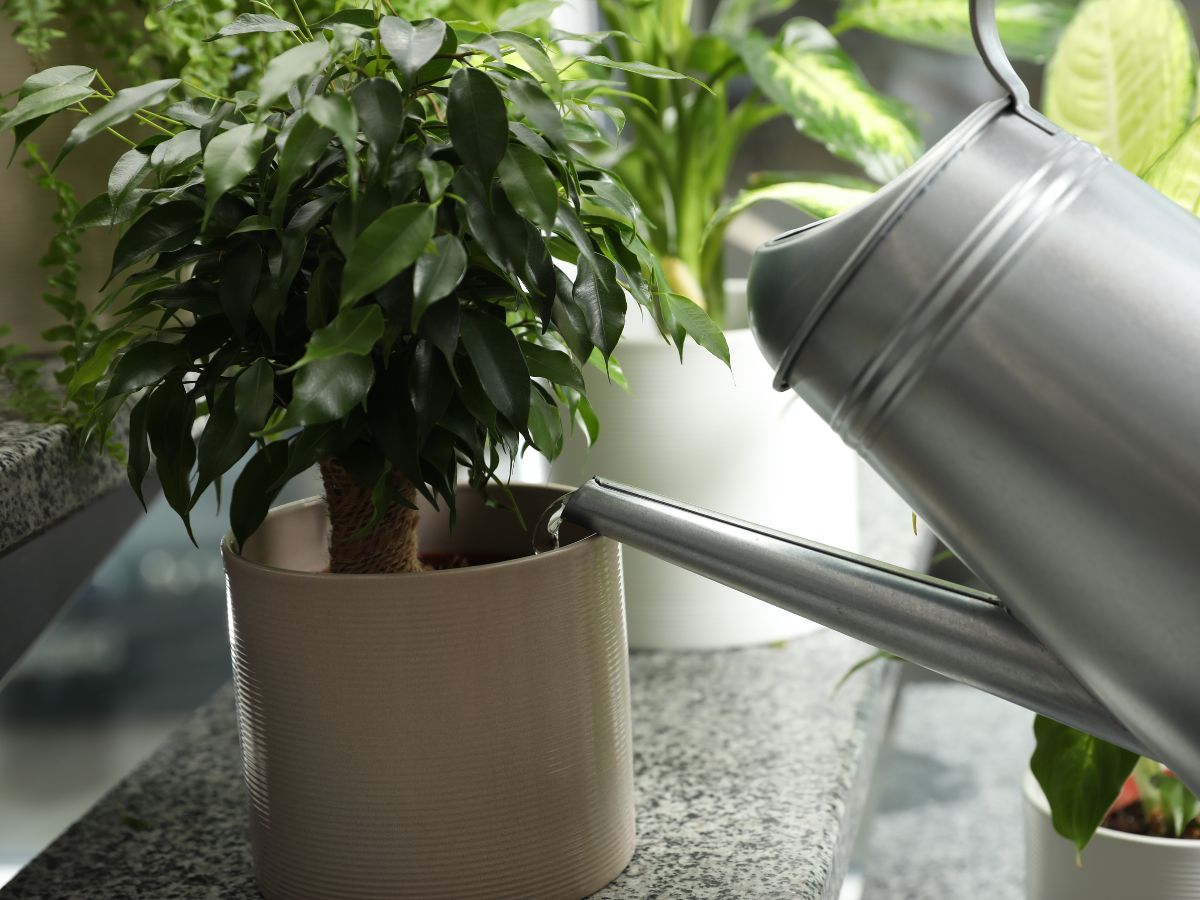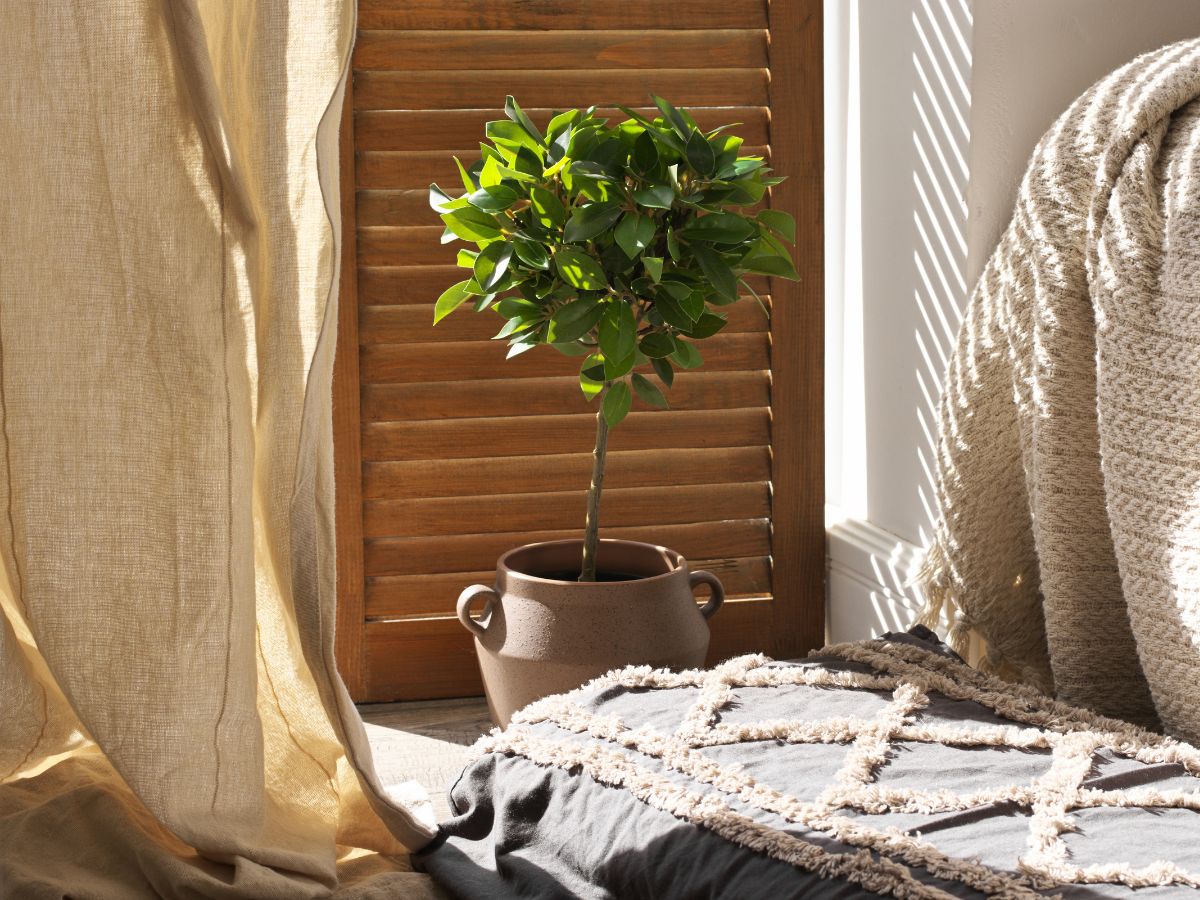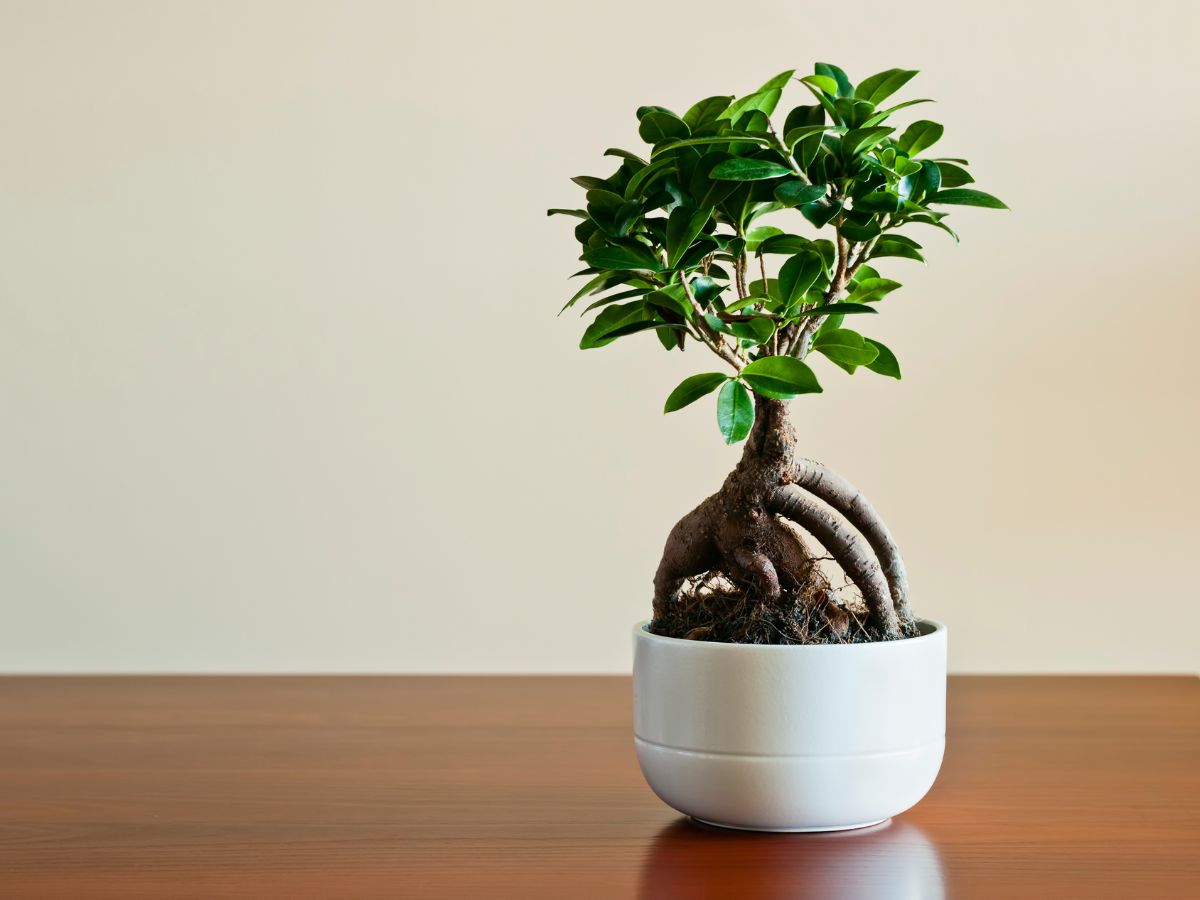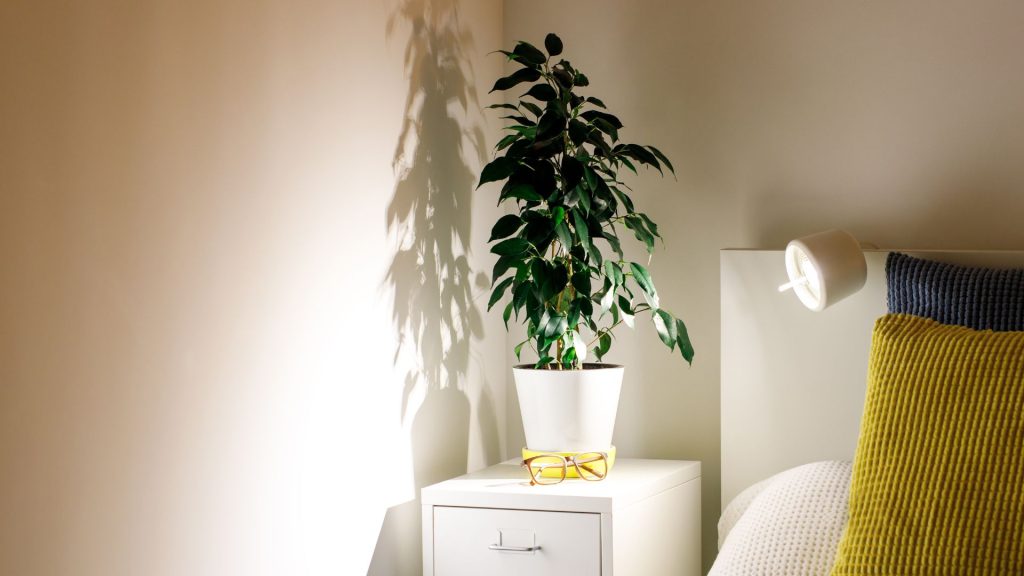Ficus Benjamina, also known as weeping fig is an elegant tree often grown indoors to enhance interior architecture. The weeping fig tree has an excellent display of dark leaves adorning delicate branches that fan out from a gorgeous intertwined tree trunk.
Weeping Fig or Ficus Benjamina is a native evergreen tree of Australia and South Asia. The warm, humid climate created the perfect conditions for the Weeping Fig to grow extremely large, sometimes reaching 60 feet. You are most likely to see Ficus Benjamina clumped together to create a hedge or row of bushes. Its sensitivity to climate and surroundings means that growing it indoors can seem like quite a mammoth task.
As we know, a Benjamin Ficus tree can grow quite large, with most indoor-grown Benjamina Ficus reaching around 6 feet tall!
A weeping fig plant has so many benefits. Not only is it stunning to look at, but it is also renowned for being one of THE BEST plants at removing toxins from the air. So, if you’re looking for better air quality then placing a weeping fig indoors is the way forward. Many people choose to grow plants indoors for the mental health benefits associated with caring for something and having a task you can complete daily. With the Ficus Benjamina, you can reap the rewards both mentally and physically with fresh clean air flowing indoors.
This beautiful evergreen tree is very simple to care for indoors however is unlikely to produce blooms if grown inside.
How to Grow Ficus Benjamina?
Ficus Benjamina, also known as the weeping fig or Benjamin fig, is a popular indoor plant that can add beauty and charm to your home or office. Here are some tips on how to grow and care for Ficus Benjamina:
Light
Ficus Benjamina prefers bright, indirect light, but can also tolerate some shade. Avoid placing it in direct sunlight, as it can cause leaf burn.
Watering

Water your Ficus Benjamina when the top inch of soil feels dry to the touch. Be sure not to overwater, as it can lead to root rot. During winter, when the plant is dormant, reduce watering frequency.
Soil
Ficus Benjamina prefers well-draining soil that is rich in organic matter. You can use a soil mix that contains peat moss, perlite, and sand.
Temperature and humidity
Ficus Benjamina prefers warm temperatures between 60-75°F (15-24°C). It also prefers high humidity, so it’s a good idea to place it in a room with a humidifier or to mist the leaves regularly.
Fertilizer
Ficus Benjamina benefits from regular fertilization during the growing season (spring and summer). You can use a balanced fertilizer (10-10-10) every two to four weeks.
Pruning
Ficus Benjamina can become leggy if it doesn’t receive enough light. You can prune it to maintain its shape and encourage new growth. It’s best to prune in the spring or summer when the plant is actively growing.
Top Tips for Weeping Fig Care
As with all plants grown indoors, knowing the correct way to care for them is absolutely essential to gain the best results and have successful growth.

We shall aim to cover everything you need to know about Ficus Benjamina care, focusing on planting, sunlight needs, and watering Ficus Benjamina indoors.
Potting Your Weeping Fig/Ficus benjamina
First, find a medium to a large potting container with a good draining system. Fill your pot with a simple potting mix. Your Ficus Benjamina does not require any special nutrient-rich soil but may need fertilizing in the future. It is unlikely you will be growing a weeping fig tree from seeds so place your Benjamin Ficus cutting into the soil about ½ – ¾ way down. Mist the soil so it is moist and pack down gently.
In the initial stages cover your plant with a clear plastic bag (it is very important the bag doesn’t touch your Ficus). Secure with rope. Place your weeping fig in a good growing location and mist once per day. In 3 weeks’ time, you can remove the bag and help your Ficus Benjamina get used to the room’s climate.
Watering Ficus Weeping Fig
Ficus Benjamin trees require plenty of care and attention, particularly when it comes to watering. A weeping fig can start to drop its leaves and yellow if it is overwatered. As an incredibly sensitive plant, it is vital you set up a watering routine ensuring the soil is suitably moist at all times. Again, do not overwater your Benjamin Ficus even if you see leaves dropping for other reasons. Common reasons for leaf dropping are:
- Change in environment
- Too much water
- Seasonal changes
- Disease/pests
How Much Sunlight Does a Ficus benjamina Need?
Sunlight is essential for all plants and the Ficus Benjamina is no different!
Often indoors the correct lighting conditions are hard to come by. The ideal location for your weeping fig is somewhere with plenty of access to sunlight (it can be indirect). In perfect circumstances, your ficus will sunbathe for at least 6 hours per day. Weeping Fig is a very adaptable plant however it does take time to get used to its surroundings so be careful not to change its location too often.
Is a Weeping Fig a Bonsai?
Weeping Fig/Ficus Benjamina can grow in many varieties including Bonsai! It is best to establish which variety of Ficus you have before choosing the location for your plant. The Weeping Fig Bonsai is an excellent starting Bonsai for beginners. Similar to all Ficus varieties plenty of sunlight and moist soil is essential for successfully growing Weeping Fig Bonsai.
Maintaining Your Weeping Fig Tree

Weeping Fig is reasonably simple to care for especially once they have settled in their new home and you’ve set up a regular care routine for your plant.
In order to maintain your Ficus make sure you prune any dead leaves and don’t be alarmed if many leaves drop or change in color if an environmental/climatic change has occurred. Once every four months, you should add a thin layer of fertilizer to your Benjamin Ficus Tree to ensure it is receiving the proper nutrients for healthy growth.
Weeping Fig is a magnificent houseplant, it provides stunning indoor decoration, is fairly robust, and can be quite simple to care for so is a great indoor houseplant for new starters.
For those of you out there looking for a houseplant that is a little on the larger side then the Ficus Benjamina is the plant for you! Following the simple care rules for your weeping fig will help you reap the rewards. In a year or so your wonderful Ficus will be turning into a recognizable tree.


